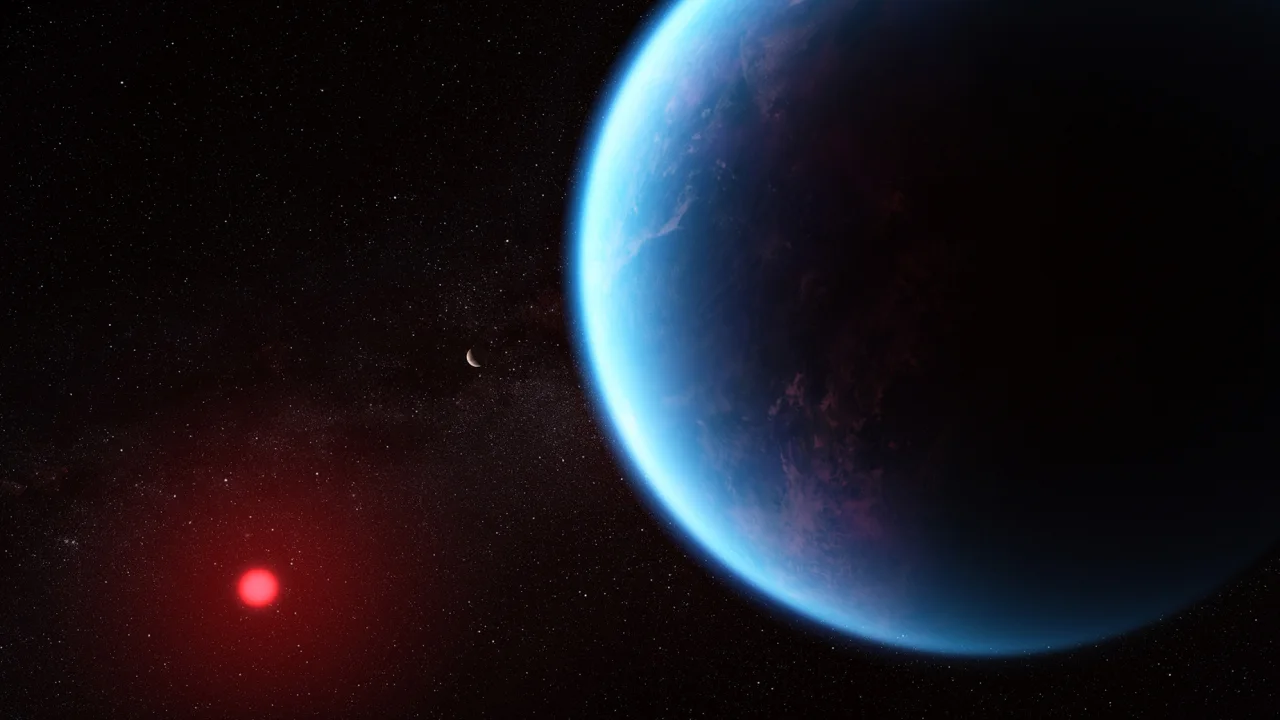
Webb Data Reveals Possible Sign of Life on New Planet Found in 'Goldilocks' Zone
Recent data collected from the James Webb Space Telescope (JWST) may have spotted possible signs of life on a new exoplanet found in the 'Goldilocks,' or habitable zone, which is currently in orbit around a cool dwarf star called K2-18.
According to recent reports, liquid water could potentially be flowing on the surface of K2-18b (the name given to the colossal exoplanet that is approximately 120 light-years away from planet Earth), thanks to newly unearthed evidence from the space-based observatory. The JWST is one of the most advanced astronomy instruments ever built by humans that's currently in operation.
The exoplanet appears to have key features that are vital in supporting huge bodies of water, which means there could also be life. K2-18b is thought to be in the habitable zone, which is often referred to as the Goldilocks zone – orbiting not too close so the planet is too hot to sustain life and not too far away to be too cold to sustain life, just like Earth, but it's around 8.6 times bigger than our planet.
Other evidence gathered by the JWST revealed that the ocean world's atmosphere has an abundance of carbon dioxide and methane. A recent NASA press release also highlighted the lack of ammonia, hinting at a possible atmosphere that could be rich in hydrogen. The main building block for life on Earth is carbon.
The Hubble Space Telescope first detected possible evidence of water vapor in the exoplanet in findings described in a study first released in September 2019. This revelation urged scientists to use the JWST to focus more on the planet that orbits K2-18 in the habitable zone.
The telescope, which can detect infrared light that's impossible to see with the human eye, closely monitored the exoplanet to find out exactly which elements may be present in the atmosphere. In the most recent findings, it is thought that K2-18b may even be home to dimethyl sulfide (DMS), which has been referred to as a 'very special molecule.'
According to NASA, dimethyl sulfide is only produced by life when it is released by phytoplankton in Earth's oceans and other marine environments.
Life on K2-18b is not guaranteed
Despite these findings, experts in the field who have been sifting through the evidence are not guaranteeing that the exoplanet is abundant with alien life forms. According to a statement from the professor of astrophysics and exoplanetary science at the University of Cambridge, astronomer Nikku Madhusudhan, more studies must be undertaken to confirm whether DMS is present in the atmosphere.
The professor is the lead author of a scientific paper that was recently accepted by The Astrophysical Journal Letter for publication. It describes the recent findings made by the team working on the evidence gathered by the JWST.
Even if scientists corroborate the presence of the chemical compound, it still doesn't outright suggest that alien life 100% exists on K2-18b. However, it does help with experts' understanding of exoplanets like the one in close orbit to the cool dwarf star K2-18.
Worlds with hot oceans
The atmospheric composition discoveries made by the James Webb Space Telescope also hint at the possibility that K2-18b may even be what is referred to as a 'Hycean exoplanet.' This theoretical type of exoplanet has a hydrogen-rich atmosphere, is covered in oceans, and is extremely hot.
Although the theory goes that wherever there is liquid water, there may also be life, some researchers believe that Hycean exoplanets, if that's what K2-18b turns out to be, may not be able to sustain any kind of life because they are too hot. One such study noted that a crushing greenhouse effect would make harboring any kind of life almost impossible.
However, to date, Hycean exoplanets have yet to be discovered, so K2-18b would be a first. Very little else is known about these types of exoplanets.
Over the coming years, all of the evidence gathered by the JWST will continue to be studied to get to the bottom of this intriguing mystery about a planet that may be home to some form of alien life.
Madhusudhan said that the mission's ultimate goal would be to find guaranteed life on a habitable exoplanet, which would completely change how human beings understand our current place in the universe. The JWST will continue being used by researchers to make new discoveries and study those findings before presenting them to the world.










